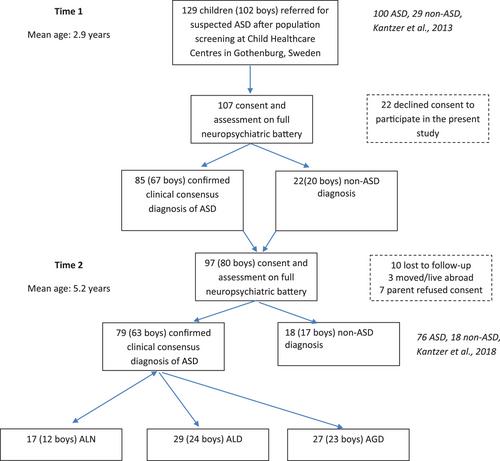Speech sound error patterns may signal language disorder in Swedish preschool children with autism
Abstract
Background
Within cohorts of children with autism spectrum disorder (ASD) there is considerable variation in terms of language ability. In the past, it was believed that children with ASD either had delayed articulation and phonology skills or excelled in those areas compared to other language domains. Very little is known about speech sound ability in relation to language ability and non-verbal ability in Swedish preschool children with ASD.
Aim
The current study aimed to describe language variation in a group of 4–6-year-old children with ASD, focusing on in-depth analyses of speech sound error patterns with and without non-phonological language disorder and concomitant non-verbal delays.
Method & Procedures
We examined and analysed the speech sound skills (including consonant inventory, percentage of correct consonants and speech sound error patterns) in relation to receptive language skills in a sample of preschool children who had screened positive for ASD in a population-based screening at 2.5 years of age. Seventy-three children diagnosed with ASD participated and were divided into subgroups based on their receptive language (i.e., non-phonological language) and non-verbal abilities.
Outcomes & Results
The subgroup division revealed that 29 children (40%) had language delay/disorder without concurrent non-verbal general cognitive delay (ALD), 27 children (37%) had language delay/disorder with non-verbal general cognitive delay (AGD), and 17 children (23%) had language and non-verbal abilities within the normal range (ALN). Results revealed that children with ALD and children with AGD both had atypical speech sound error patterns significantly more often than the children with ALN.
Conclusions & Implications
This study showed that many children who had screened positive for ASD before age 3 years – with or without non-verbal general cognitive delays – had deficits in language as well as in speech sound ability. However, individual differences were considerable. Our results point to speech sound error patterns as a potential clinical marker for language problems (disorder/delay) in preschool children with ASD.
WHAT THIS PAPER ADDS
What is already known on the subject
- Children with autism spectrum disorder (ASD) have deficits in social communication, restricted interests and repetitive behaviour. They show very considerable variation in both receptive and expressive language abilities. Previously, articulation and phonology were viewed as either delayed in children with ASD or superior compared with other (non-phonological) language domains.
What this paper adds to existing knowledge
- Children with ASD and language disorders also have problems with speech sound error patterns.
What are the potential or actual clinical implications of this work?
- About 75% of children with ASD experience language delays/disorders, as well as speech sound problems, related to speech sound error patterns. Understanding/acknowledging these phonological patterns and their implications can help in the diagnosis and intervention of speech sound disorders in children with ASD. Direct intervention targeting phonology might lead to language gains, but more research is needed.


 求助内容:
求助内容: 应助结果提醒方式:
应助结果提醒方式:


